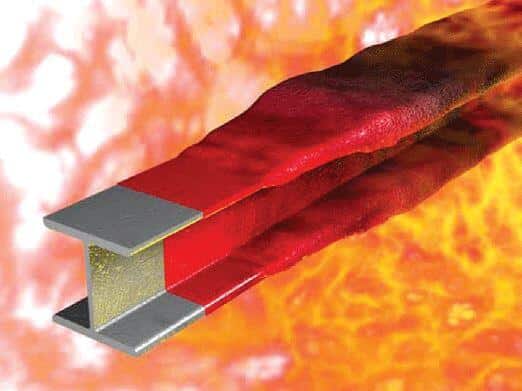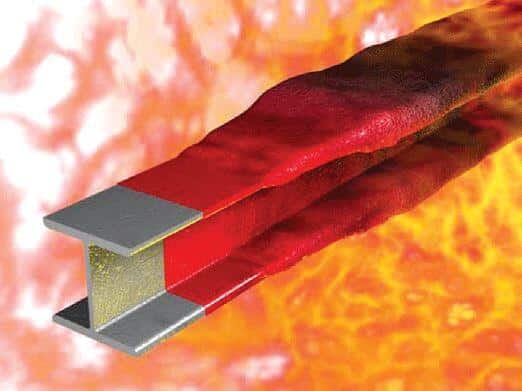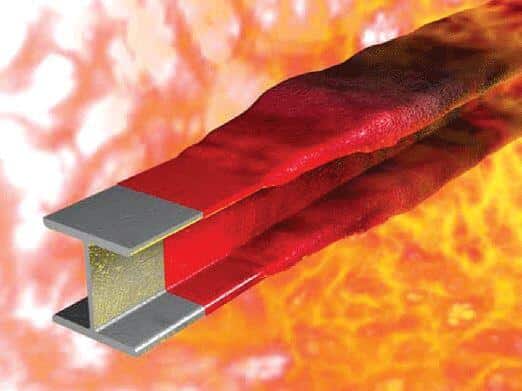Fire is a devastating force that can cause enormous destruction to buildings and endanger lives. To reduce the risks associated with fire, it is important to take fire safety measures, including using fire-resistant materials and adhering to fire safety rules and regulations. One of the most important aspects of fire safety is understanding the concept of fire resistance class. In this article we examine what the fire resistance class entails, how important it is for the protection of buildings and what factors influence it.
Fire resistance rating refers to the length of time that a component such as a wall, floor or door can withstand the effects of a fire without compromising its structural integrity or spreading the fire to other areas. The grade is determined through rigorous testing procedures carried out in specialized laboratories.
Importance of fire resistance class
The main purpose of fire resistance is to give occupants enough time to safely evacuate a building in the event of a fire. Using fire-resistant materials and assemblies can slow the spread of fire and smoke, giving emergency crews more time to control the situation.
Furthermore, fire resistance rating plays a crucial role in protecting property and minimizing damage, thereby reducing potential financial losses caused by fire accidents.
To determine the fire resistance of a component, it is subjected to standardized fire tests, such as STM E119 or UL 263. These tests subject the material or assembly to high temperatures, simulating real fire conditions. The test evaluates criteria such as fire containment, structural stability and the ability to prevent the penetration of flames and smoke.
The fire resistance class is typically expressed in minutes or hours and indicates how long the component can withstand exposure to fire.
For example, a wall with a one-hour fire rating can withstand flames and heat for 60 minutes before suffering structural failure or fire spread.


Factors affecting fire resistance class
The fire resistance of a component is influenced by several factors. These include the type and thickness of materials used, structural configuration, insulation properties and the presence of fire protection systems such as sprinklers. Each of these factors plays an important role in determining the overall fire performance of the structure.
Fire resistance is a measure of how well a material, structure or assembly can withstand the effects of fire. The fire resistance of a given element or system can be influenced by several factors. Here are some of the most important factors:
- Material composition: The type and composition of materials used in construction play an important role in determining fire resistance. Certain materials such as concrete, plaster and mineral wool are naturally more fire resistant than wood or plastic.
- Thickness: The thickness of a material or assembly can affect its fire resistance. Thicker materials generally provide better insulation and are more effective at preventing heat transfer in the event of a fire.
- Density: The density of a material affects its ability to absorb and retain heat. Higher density materials, such as concrete or brick, tend to have better fire resistance properties due to their ability to absorb and dissipate heat.
- Fire-Resistant Coatings: Applying fire-retardant coatings or treatments to materials can improve their fire resistance. These coatings are intended to provide a protective barrier that slows the spread of fire and reduces heat transfer.
- Structural configuration: The design and configuration of a structure or assembly can affect its fire resistance. For example, fire-resistant barriers, fire guards and partitions can help prevent the spread of fire and limit its impact.
- Ventilation: The presence and design of ventilation systems can affect the fire resistance of a building. Properly designed ventilation can help remove smoke and heat, improve occupant safety, and minimize damage.
- Fire-resistant joints and seals: Joints and seals in building assemblies can be vulnerable to the spread of fire. The use of fire-resistant gaskets, gaskets and expansion joints can help maintain the integrity of fire-resistant assemblies and prevent fire intrusion.
- Installation quality: The quality of construction and installation practices can affect a structure's fire resistance. Proper installation of fireproof materials, compliance with building codes, and regular maintenance can ensure that the intended fire resistance is achieved.
Factors affecting the fire resistance class of buildings
The fire resistance of buildings can be influenced by several factors. These factors affect the ability of the building's structural elements and systems to resist the effects of fire. Here are some key factors:
- Construction material: The type of materials used in construction has a significant impact on fire resistance. Certain materials such as concrete, brick and steel have inherent fire resistant properties and offer better fire protection compared to wood or plastic. The composition and thickness of these materials play a crucial role in determining their fire resistance.
- Structured design: The structural design of the building influences its fire resistance. Elements such as fire-resistant walls, floors and doors, as well as the arrangement of fire compartments and firebreaks, can help contain the spread of fire and limit its impact. A well-designed building with adequate fire-resistant barriers and fire compartmentation can improve its overall fire resistance.
- Fire protection systems: The presence and effectiveness of fire protection systems have a great influence on the fire resistance class. These systems include sprinkler systems, fire alarms, smoke detectors, and fire extinguishers. Proper installation, maintenance and functionality of these systems can help detect and suppress fires and minimize their spread and damage.
- Fire resistance of components: Different components of a building, such as walls, floors, columns and roofs, have different fire resistance ratings. The fire resistance of these components depends on factors such as material, thickness, insulation and the presence of fire protection measures. The fire resistance of each component contributes to the overall fire resistance of the building.
- Ventilation systems: The design and operation of ventilation systems can affect the fire resistance rating. Properly designed ventilation can help remove smoke and heat, improve occupant safety, and minimize the spread of fire. However, inadequate ventilation can accelerate the spread of fire and smoke throughout the building.
- Number of people: The number of people in a building affects its fire resistance. Buildings designed to accommodate large numbers of people may require more stringent fire safety measures to ensure the safe evacuation of people in the event of a fire.
- Maintenance and repair: Regular maintenance and inspection of fire protection systems, construction components and fireproof materials are essential to maintain the intended fire resistance rating. Neglecting maintenance can reduce the effectiveness of fireproofing elements and reduce the overall fire resistance of the building.
- Compliance with Building Regulations: Compliance with local building codes and regulations is critical in determining fire resistance ratings. Building codes provide guidelines and requirements for fire safety measures, including fire-resistant building materials, fireproof assemblies, and installation practices. Compliance with these regulations ensures that the building meets minimum fire safety requirements.
It is important to note that the fire resistance of a building is generally determined through standardized testing and certification procedures. These ratings provide a standardized way to evaluate and compare the fire resistance of different buildings.
Fire resistance plays a critical role in protecting buildings and occupants from the devastating effects of fire. By understanding the concept, adhering to building regulations and using fire resistant materials and assemblies, we can significantly reduce the risk of fire incidents.
It is important that architects, engineers and construction professionals make fire safety measures a top priority and stay up to date on the latest advances in fire safety technology.
Common questions
- What is the difference between fire resistance and fire protection? Fire resistance refers to the length of time a structural member can resist fire without failing, while fire protection means the application of protective materials to increase the fire resistance of a structure.
- Do all construction elements have to have the same fire resistance class? No, different fire resistance class requirements apply to different building elements depending on their function and location within the structure.
- Can the fire resistance of existing buildings be improved? Yes, existing buildings can be made more fire resistant through additional fire protection measures and material improvements.
- How often should fireproof assemblies be inspected? Fireproof assemblies must be inspected regularly, with a frequency determined by building codes and standards, typically annually or biennially.

